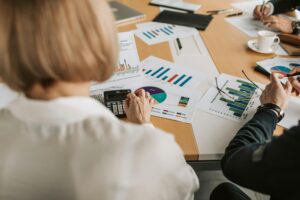Implementing the 2030 Agenda and the Paris Agreement, achieving the SDGs, assumes a transition from our petroleum-based linear economy to the climate-neutral circular economy paradigm. The goals of this transition are: (i) building a more innovative, inclusive and low-emissions economy through modernizing the existing and developing new supply chains and business models; (ii) reducing our material footprint to reduce emissions and ensure conservation of biological resources and inter- and intra-generational equity; (iii) substituting oil-based materials and products with alternative bio-resources and bio-based materials; (iv) generating new employment opportunities. Such a fundamental and multitasked transition represents both challenges and opportunities. On the opportunity side, these imperatives create a strong incentive to modernize and innovate economies, rebalance the market powers within the countries, disrupt business as usual modes of doing business.
On the challenges side, such a fundamental change requires cutting-edge technologies, finance, capacity, innovative and cross-sectoral policies, the political will to support this change. Naturally, advanced economies have more advantageous starting points for such transition.
modus operandi, forms of cooperation within and between scientific, private and public sectors of the economy. It implies different rationales underlying investment and financing, sourcing, production, consumption, competition, and policies.
that have good technology capacity such as the EU, US, Japan to reinforce position in a highly competitive global economy. On the challenges side, it implies a a significant change in
With the right policies in place, biotech could jumpstart a more circular economy and help us face the grand challenges of climate change, soil destruction, water and energy security, and resource scarcity. (OECD, 2018)
To achieve this, European Commission has set a Bioeconomy Strategyand action plan which focuses on three key aspects: developing new technologies and processes for the bioeconomy; developing markets and competitiveness in bioeconomy sectors; pushing policymakers and stakeholders to work more closely together.Bio-based manufacturing can become a reality but many hurdles must be cleared first. The bioeconomy is in the early stages of development and governments around the world are still developing policies to support the bioeconomy and assessing what their role is in helping companies overcome the “valley of death”. A lack of financing for bioeconomy projects has been identified as barrier to the deployment and commercialization of bioeconomy technologies and supply chains.
The development of the bioeconomy requires successful innovation. Biotechnology R&D must be performed, paid for, and result in commercially viable products and products. This process is influenced by many factors, including regulatory conditions, intellectual property, human resources, social acceptance, market structure, and business models.
There is a strong link between the transition to a circular economy and achieving the international climate policy objectives.
Climate change and material use are closely connected. (UNFCCC, 2019)Between 62% and 85% of global GHGs (excluding those from land use and forestry) are released during the extraction, processing, and manufacturing of goods to serve society’s needs. Recycling, greater resource efficiency, and circular business models offer huge scope to reduce emissions. (Circle Economy, 2018)





